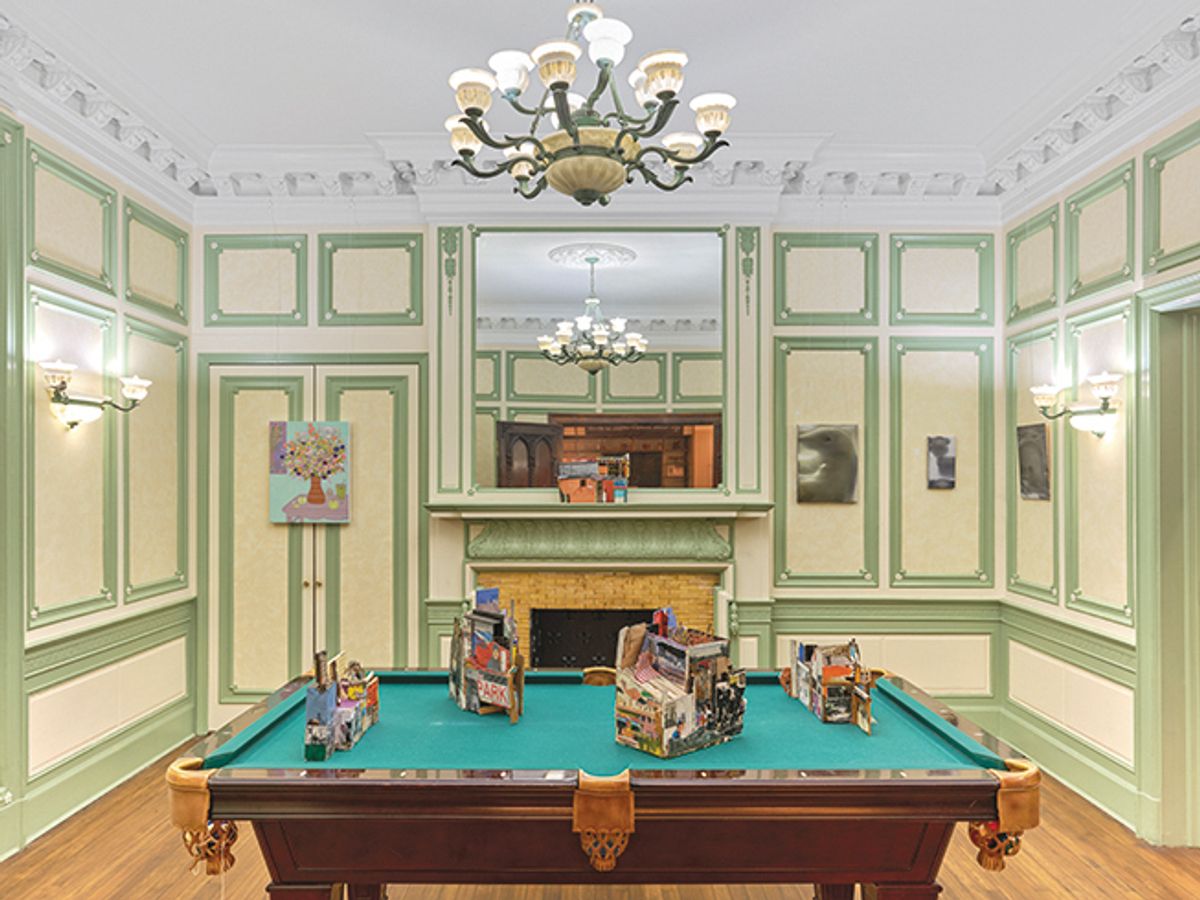Esther, a boutique fair that brings together artists and galleries from the US, Europe and Asia while reflecting the selling points of Estonia—home country of its founders, the dealers Olga Temnikova and Margot Samel—is holding its second iteration at the Beaux-Arts Estonian House in Manhattan (until 10 May).
Temnikova is the founder of the Tallinn-based gallery Temnikova & Kasela, a driving force in contemporary art in a country that precariously borders Russia and Latvia by land and Finland and Sweden by sea. Samel runs a self-named gallery in Tribeca. The Esther co-founders consider it as much a project as a fair. “It is an art fair obviously, and I’m a little more comfortable saying the word these days,” Samel says.
Although the cost of participating in Esther has gone up, from $1,500 to $2,500, it remains a tiny fraction of the typical stand fee for a larger fair. Those slightly higher fees have allowed Temnikova and Samel—who manned the doors and space throughout the show last year—to hire help. But, like a larger fair, Esther is susceptible to shifts in global forces, like US President Donald Trump’s trade war and crackdown on migrants, which have made it unclear what costs might be tagged on to the shipping of art and whether it is safe for artists to travel to the US.
“My programme in general, not just talking about Esther, is quite international,” Samel says. “I don’t show a lot of American artists. That’s the main topic right now: artists being worried about coming to the US.”
There are 25 galleries at Esther this year, including the US galleries James Fuentes and Sargent’s Daughters, both of which have spaces in New York and Los Angeles. Samel is showing pieces by the Estonia-born, London-based painter Mariann Metsis and works from the estate of the late Philadelphia-based artist Leroy Johnson made of clay and found materials. The Montreal-based Pangée Gallery is exhibiting works by the California-born, New York-based artist Brandon Morris and Claire Milbrath, who is Canadian.
European galleries showing at Esther include Temnikova’s—which brought sculpture and installation works by Edith Karlson and Zody Burke—Kogo Gallery, a returning exhibitor from Tartu, Estonia, and Ivan Gallery from Bucharest. The Vienna-based gallery Sophie Tappeiner is showcasing abstract paintings by Jasmine Gregory.
In its second edition, the fair has taken over two additional spaces in the 19th-century building and, though it does not feature conventional stands, there are more clearly defined distinctions between exhibitors in contrast to last year’s group exhibition aesthetic.
Another new feature of Esther this year is the presence of on-site designers. The Paris-based fashion designer Julia Heuer and the Estonian brand Laivi are creating customised t-shirts on the spot at reasonable price points that combine their seemingly disparate styles. Laivi is best known for all-black clothes while Heuer’s reputation is built around “juicy, intense textures and patterns”, Temnikova says. “You can combine out of different custom-printed elements.” She adds: “It is meant to target the hierarchic relationship between the designer and the consumer.”
Mathieu Borysevicz, the founder of the Shanghai-based gallery Bank, recently opened a temporary outpost in New York. He is returning to Esther after it “covered our costs and then some” last year, he says, with the sale of a work by the Dominican-born painter Bony Ramirez.
“Everybody came and checked it out,” he says of the inaugural edition. “The turnout was great. We met all kinds of new people, being not a local gallery at the time. The pace of it allowed you to have longer, more meaningful conversations.” This year Bank is showing works by Wenjue, an artist born in Beijing in 2001, whom Borysevicz discovered on Instagram.
Galerie Quynh from Ho Chi Minh City, a new participant this year, ended up at Esther thanks to a connection through Will Thurman, a US-born artist who spent years in Vietnam and is now based in Tallinn. Although Estonia has a population of under 1.4 million compared with Vietnam’s 100.4 million, Temnikova says that their burgeoning art markets are remarkably similar. Galleries in such settings for contemporary art, she says, “end up being responsible for creating the entire infrastructure”.


